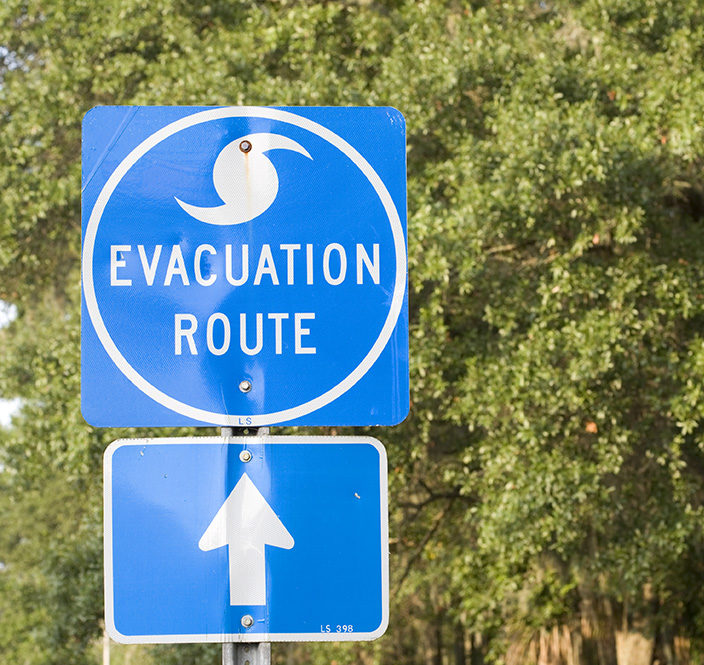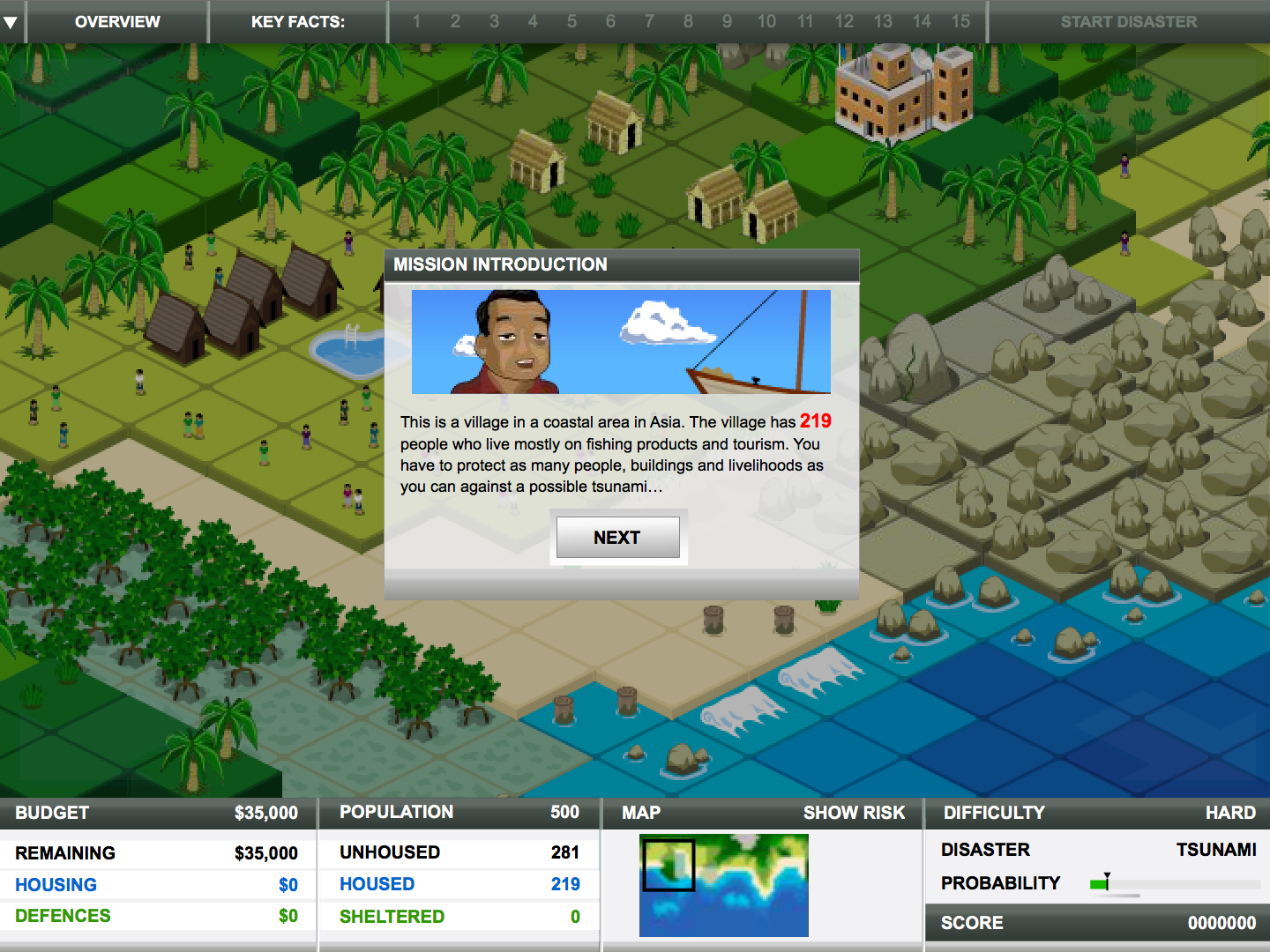Disaster Philanthropy Playbook

Mitigation & Preparedness
Introduction
“Every year, communities in the United States are challenged by natural disasters including floods, tornadoes, and earthquakes. Every time a major disaster strikes, community members are forced to figure out how to respond, often with little preparation. With support from individuals, nonprofit organizations, faith-based groups, funders, and local/state/federal agencies, incredible work gets done, but perhaps not as effectively or as efficiently as it could.”
— Funders’ Network
When a disaster is not on the immediate horizon, or has faded from memory, it is easy to overlook the preparations that organizations and communities can make to mitigate loss of life and property, and facilitate effective disaster response. To lessen the impact of a disaster, it is important for philanthropic and nonprofit organizations to have:
- An internal preparedness plan (how staff and Board members will maintain operations during a disaster) and
- An external plan (strategies and actions that will be taken to assist constituencies and communities).
These plans are especially critical for those organizations located in areas subject to repeated disasters, such as tornadoes, fires, landslides, hurricanes, flooding or earthquakes.
- Preparedness plans should be thorough, and reviewed and rehearsed regularly;
- Identify whether or not your state/region has an active VOADVoluntary Organizations Active in Disaster and/or LTRGLong Term Recovery Group;
- Make sure your state/region has a central, non-governmental, website (this could be your VOADVoluntary Organizations Active in Disaster site) to communicate vital information to a broad audience during and following a disaster;
- Build and strengthen existing relationships with government and emergency management officials, local first-responders, and nonprofits who are most likely to be called upon in times of disaster.
Grantmakers can emphasize the importance of disaster preparedness to their communities and provide appropriate assistance in that effort. According to the United Nations Development Programme, “Every dollar invested into disaster preparedness saves seven dollars in disaster aftermath.”

Innovative Practices
Philanthropic organizations can make significant contributions to helping communities be prepared for disasters thereby mitigating losses and fostering resiliency by:
- training your staff and board on disaster preparedness and response;
- including business continuity planning in daily operations;
- hiring a new employee or recruiting a board member trained in emergency management;
- creating a restricted disaster fund;
- developing memos of understanding (which define parameters of emergency grants) with key grantees who will be called upon to act when a disaster strikes;
- supporting and convening preparedness training sessions for grantees;
- supporting and interacting with statewide VOADVoluntary Organizations Active in Disaster and LTRGLong Term Recovery Groups or, if these don’t exist, in the region, convening your region’s stakeholders to develop a strategy to establish a VOADVoluntary Organizations Active in Disaster;
- partnering with federal and state government agencies in supporting relevant training programs; conferences; educational forums and exercises for your community;
- participating in readiness campaigns.
Grantmakers can lead efforts to educate nonprofits and local leaders regarding the possible financial resources available for rebuilding and the criteria/parameters surrounding the use of these monies. These resources may include:
- FEMAFederal Emergency Management Agency grants for individuals;
- FEMAFederal Emergency Management Agency’s Hazard Mitigation Grant Program for communities;
- Small Business Association loans;
- HUDFederal Office of Housing and Urban Development grants and 203(h) and 203(k) mortgages;
- State Community Development Block Grants (federal disaster funding);
- homeowners insurance;
- Long Term Recovery Group grants (last resort funding).
What Funders Are Doing
The following are examples of innovative practices and grants that philanthropic organizations have supported, developed and/or implemented regarding mitigation and preparedness.
Philanthropic and nonprofit organizations need to make preparations to mitigate the loss of life and property and facilitate effective disaster response.
The following grants were given as part of the Center for Disaster Philanthropy’s (CDP) COVID-19 Response Fund. Multiple grants were given to support the mitigation of COVID-19’s spread by supporting people who have pre-existing medical conditions, are elderly or other conditions that make it dangerous for them to leave the house during the pandemic:
- $65,000 was given to the Backside Learning Center to provide immediate COVID-19 mitigation-related services to a community that lacks access – those working in the equine industry.
- CrowdSource Rescue was awarded $40,000 to continue organizing volunteers for no-contact food deliveries to seniors and high-risk residents in 11 southeast Texas counties.
- Culture Aid NOLA received $90,000 to provide no-barrier, free food distribution and information dissemination to New Orleans populations most affected by the societal impact of COVID-19 and most at risk of economic collapse from widespread job loss and lack of public or private safety nets.
- Meals on Wheels America was awarded $125,000 to support the necessary expansion of their programs supporting senior feeding at the local level. This grant will also support building their capacity to provide much-needed telecommunications.
- Meals on Wheels of Tampa received $50,000 to feed and care for Tampa’s vulnerable at-home and at-risk neighbors who are sheltering in their homes due to their physical and mental limitations.
- Healthcare Ready was awarded $127,100 to support the expansion of its programs for its COVID-19 Pandemic response. The organization works with its partners on the frontlines, readying the health care supply chain to respond to and recover from disruptions in the communities where they serve.
Another example related to COVID-19:
- The Community Foundation for Northern Virginia donated $20,000 to Hopkins House to help it continue its mission to empower communities of color to tackle important public policy issues through effective advocacy and community organizing, with a focus on digital outreach efforts to educate families about COVID-19 prevention and mitigation.
Other examples of Mitigation and Preparedness grants include the following:
- The Houston Endowment has made multiple grants totaling over $10 million since 2011 to Rice University’s research project into reducing the impact of storm surges and other hurricane-related flooding. The operationalization of this project is the responsibility of the Harris County Flood Control District. Residents of the Meyerland area in Southwest Houston saw heavy flooding during Hurricane Harvey in 2017, but have credited the Brays Bayou project – part of the larger flood control program in the Houston area – with preventing flooding during Tropical Storm Beta in 2020.
- New House in Santa Barbara, California received $3,647 from the Santa Barbara Foundation to assist in purchasing three portable generators and accessories for its disaster preparedness plan.
- In 2020, the William and Flora Hewlett Foundation gave $500,000 to the Windward Fund to examine the institutional and regulatory barriers to using forest thinning to create lumber products and biofuel with carbon capture. In addition, the project will identify revenue streams that could speed up and expand wildfire mitigation efforts and work with stakeholders to achieve social buy-in for sound forest management and carbon capture. This grant is an excellent example of cooperative efforts to find ways to increase mitigation and preparedness efforts while supporting a secondary effect – in this case, the creation of biofuels and lumber products.
- As part of CDP’s 2018 Atlantic Hurricane Season Recovery Fund, Disabilities Rights North Carolina received $150,000 to improve disaster services and assistance through indirect and direct assistance to people with disabilities, advocacy and more inclusive emergency management planning.
- In 2018, CDP’s Hurricane Harvey Recovery Fund partnered with the Rebuild Texas Fund to distribute approximately $1.5 million for mitigation and preparedness in 30 grants to organizations, agencies, cities, counties and municipalities throughout the affected region.
- In 2018, the Margaret A. Cargill Philanthropies gave Lutheran World Relief $1 million for the strengthening of community-based structures for disaster preparedness and mitigation.
- As part of CDP’s 2017 Atlantic Hurricane Season Recovery Fund, $49,398 was given to COSSMA, Inc. for a pilot project titled “Strengthening Our Roots,” which includes community training sessions on home gardening that will expand to new community health clinics in Puerto Rico. This grant will enable them to reach more beneficiaries through community training sessions addressing food security and aims to increase the number of people growing healthier foods at home.
Key Takeaways
- It is important for philanthropic and nonprofit organizations to learn how the disaster response system works and have internal and external preparedness plans in place.
- Connect with the VOADVoluntary Organizations Active in Disasters and LTRGLong Term Recovery Groups serving your communities, as well as other local, state and national stakeholders.
- Grantmakers can be role models of preparedness and support disaster preparation efforts in their communities.
- A central website is an effective and efficient way to communicate during and following disasters. It can provide links to critical resources, educate citizens on the availability of financial resources, provide vital information on recovery and planning, and dispel rumors and misunderstandings.
Further Reading
- FEMA: Emergency Management Performance Grant Program
- Ready.Gov
- Youth Preparedness Programs
- Disaster Risk Governance: unlocking progress and reducing risk (United Nations Development Programme)
- VIDEO: Disaster Risk Reduction Is A Development Issue (UNDP)
- Center for Domestic Preparedness
- American Red Cross—Plan and Prepare